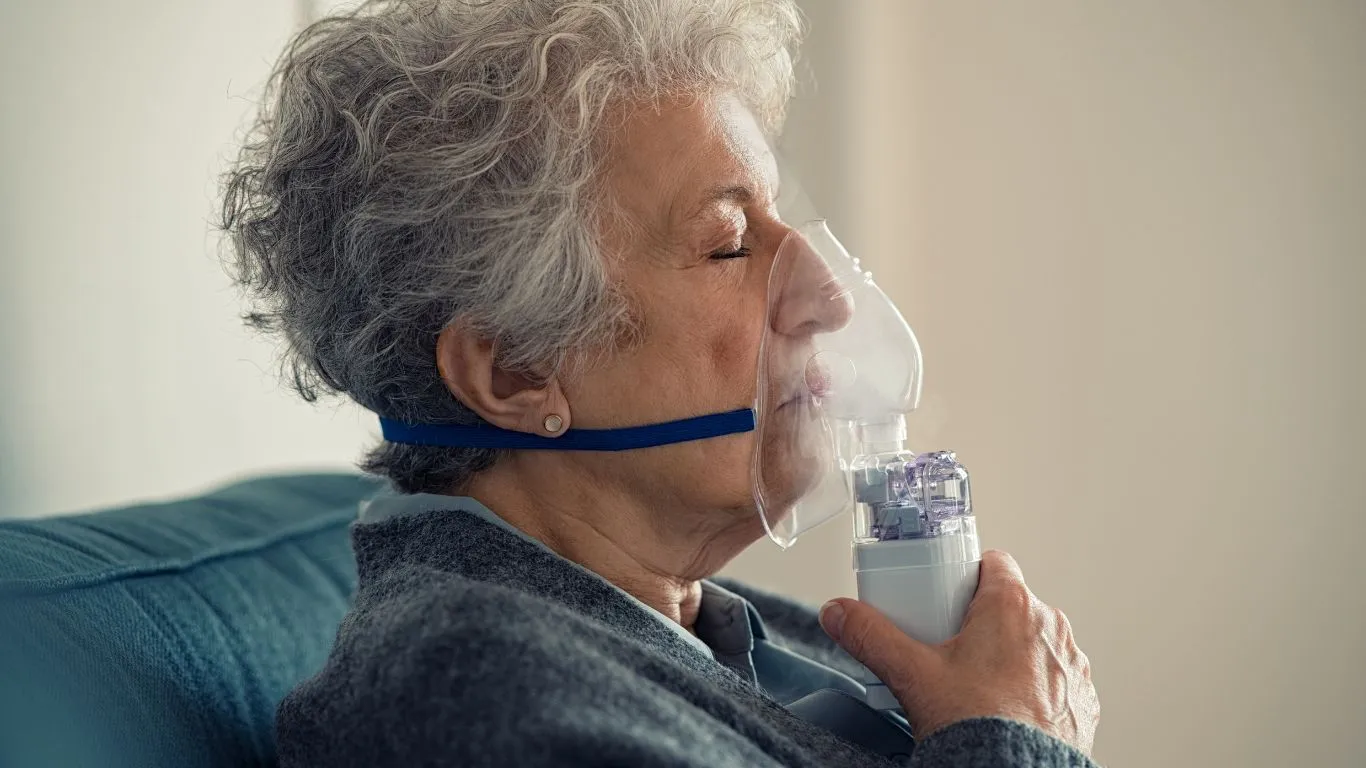How to Manage Asthma Symptoms in Young Children Naturally with Effective Tips & Remedies (Positive)
As a parent, watching your child struggle with asthma symptoms can be incredibly worrying. When it comes to managing asthma in young children, it’s vital to understand the signs and symptoms to take control and make their life a little bit easier. From wheezing to frequent coughing, the challenges of asthma are real, but there are natural ways to reduce asthma symptoms in young children. In this article, I’ll share some tips from my experience as an Asthma Expert, helping you understand what works and how you can manage asthma effectively at home.
What Are Asthma Symptoms in Young Children?

Before diving into solutions, let’s first take a look at the common asthma symptoms in young children. As a parent, you may notice some of these signs early on:
- Wheezing: This high-pitched whistling sound while exhaling is often a key indicator of asthma. You’ll hear it when your child is having trouble breathing, especially during a flare-up.
- Coughing: Coughing that worsens at night or after physical activity is common in children with asthma. It can also happen when they are exposed to allergens like pollen or dust.
- Shortness of breath: If your child struggles to catch their breath, it’s a sign that their airways are narrowed or inflamed.
- Chest tightness: A feeling of pressure or tightness in the chest can be another symptom of asthma.
What Triggers Asthma Symptoms in Children?
In my practice, I’ve noticed that certain triggers are more likely to set off asthma symptoms in young children. Every child’s triggers might be different, but some of the most common include:
- Allergens: Pollen, mold, pet dander, and dust mites can all cause asthma flare-ups in kids. These are the things we don’t always think about but are often lurking in our homes.
- Cold air: Believe it or not, cold air can be a major trigger. I’ve seen firsthand how a brisk walk outside in winter can lead to wheezing and difficulty breathing.
- Respiratory infections: Even a simple cold can exacerbate asthma symptoms in young children. Their immune systems might be weaker, making them more prone to respiratory issues.
- Physical activity: Vigorous exercise or even running around can sometimes lead to asthma symptoms. I always recommend working with your child’s pediatrician to manage asthma during physical activities.
Natural Ways to Help Reduce Asthma Symptoms in Young Children

While medication is essential for managing asthma, I believe there are also natural methods you can incorporate to help alleviate symptoms. It’s important to approach this as part of a holistic asthma management plan. I’ve worked with many parents who have found the following techniques effective in reducing asthma symptoms:
1. Use a Humidifier
One of the best ways to help with asthma symptoms is by keeping the air in your home moist. A humidifier can prevent your child’s airways from drying out, which can worsen asthma. Just make sure to clean it regularly to avoid the buildup of mold or bacteria.
2. Keep Your Home Free of Allergens
As I mentioned earlier, allergens are a major asthma trigger. From my experience, keeping your home free of dust and pet dander can significantly reduce flare-ups. Regular cleaning, including vacuuming with a HEPA filter, and using allergen-proof pillowcases and mattress covers, can help prevent these triggers from setting off asthma symptoms.
3. Herbal Remedies
Herbal treatments are a natural option some parents have turned to for helping manage asthma. While they should never replace conventional asthma treatments, herbal teas like ginger or chamomile can help soothe your child’s airways. Always consult your healthcare provider before trying any herbal remedies to make sure they’re safe for your child.
4. Breathing Exercises
Breathing exercises, such as diaphragmatic breathing, can be incredibly beneficial for children with asthma. These exercises help control the breath, reduce anxiety, and improve lung function. It’s something I’ve often recommended to parents to help manage their child’s symptoms in stressful situations, like during a flare-up or before physical activity.
Understanding the Role of Diet in Asthma Management

Believe it or not, diet plays a crucial role in asthma management. The foods your child eats can either help reduce inflammation in the lungs or contribute to worsening symptoms. I’ve seen how certain foods can make a huge difference, especially when it comes to managing asthma in young children. Here are a few diet tips to consider:
- Anti-inflammatory foods: Incorporating foods that fight inflammation can help ease asthma symptoms. I recommend foods rich in omega-3 fatty acids like salmon, chia seeds, and walnuts.
- Vitamin C-rich foods: Foods like oranges, strawberries, and bell peppers are packed with vitamin C, which can help boost your child’s immune system and fight off respiratory infections.
- Avoiding trigger foods: Some children may find that certain foods—like dairy, processed foods, or foods high in sugar—can exacerbate their asthma symptoms. I suggest keeping a food diary to identify any connections between food and flare-ups.
How to Manage Asthma Symptoms During Seasonal Changes

As someone who’s been working with asthma patients for years, one of the things I always emphasize to parents is the impact that seasonal changes can have on asthma symptoms. Whether it’s the cold air in winter or the high pollen levels in spring, these environmental changes can trigger flare-ups in young children. In my personal experience, I’ve noticed that children are particularly sensitive to shifts in the weather. Here’s how to help manage asthma symptoms during seasonal transitions:
1. Monitor Pollen Counts and Air Quality
During spring, high pollen counts are a major asthma trigger. I’ve had parents tell me that their child’s symptoms flare up around this time of year, and it’s no surprise. Pollen can irritate the airways and cause breathing problems. To combat this, I recommend keeping an eye on local pollen counts and air quality. Many weather apps provide daily updates, so you can plan outdoor activities when the levels are lower.
On days with high pollen, try to keep your child indoors as much as possible. If they must go outside, have them wear a mask (it sounds silly, but it works!), and make sure to wash their face and hands afterward to remove any allergens.
2. Layer Clothing in Cold Weather
Cold weather can constrict the airways, leading to an asthma attack. I’ve seen it time and again during the winter months, especially when children are exposed to frigid air during outdoor activities. To help prevent this, I recommend layering your child’s clothing to keep them warm, but also make sure they wear a scarf or face mask that can help warm the air they breathe in. This can prevent their airways from tightening and causing symptoms like wheezing or shortness of breath.
3. Keep Your Home Warm and Dry
During the colder months, it’s important to maintain a warm and dry environment at home. Cold and damp conditions can make asthma worse, especially if there’s mold growth. Using a humidifier, as mentioned earlier, can help keep the airways moist, but you’ll also want to ensure that your home is free from mold or mildew. Keep windows tightly sealed during the winter, and consider using a dehumidifier if needed in damp areas like basements.
How to Use Medication Effectively to Manage Asthma Symptoms

As much as I love recommending natural ways to reduce asthma symptoms, let’s not forget that medication plays a key role in managing asthma effectively. In my experience, it’s all about finding the right balance of medications and lifestyle changes. Here’s how to use asthma medications properly:
1. Understand the Difference Between Quick-Relief and Long-Term Medications
Quick-relief medications are used to manage acute asthma attacks. They act quickly to open up the airways, providing immediate relief. I always tell parents to have this type of medication on hand at all times—especially when their child is involved in physical activity or during a flare-up. This medication usually comes in an inhaler or nebulizer form and should be used as needed.
On the other hand, long-term control medications are meant to be taken daily, even when your child feels fine. These medications help reduce inflammation in the airways, preventing asthma symptoms from flaring up in the first place. I encourage parents to set a reminder to ensure their child takes their long-term medication consistently, as missing doses can result in more frequent flare-ups.
2. Using Inhalers Properly
Inhalers are often the go-to method for delivering asthma medication, but many parents struggle with getting their kids to use them properly. From my personal experience, I recommend practicing with your child so they understand how to use their inhaler. Using a spacer or a holding chamber with the inhaler can make it easier for young children to get the full dose of medication into their lungs. I’ve seen how this simple step can make a huge difference in the effectiveness of the medication.
If your child is particularly young or struggles with inhalers, there are also nebulizers available, which deliver medication in mist form. It’s a more gentle way of administering asthma medication, and some kids prefer it because they don’t have to worry about using the inhaler correctly.
3. Regular Checkups with Your Pediatrician
Keeping up with regular checkups is key to managing asthma. I can’t stress enough how important it is to stay on top of your child’s asthma treatment plan and to make adjustments as needed. Children grow, and their asthma may change over time. A pediatrician can assess your child’s asthma, check their lung function, and adjust their medications or treatment plan accordingly. I’ve had many parents tell me that regular visits to the doctor have helped them stay on track and improve their child’s overall asthma control.
When to Seek Emergency Help for Asthma Symptoms
Although most asthma symptoms can be managed at home with proper care, there are times when you need to seek emergency medical attention. Knowing when to act is crucial for your child’s safety. Here are a few signs that you should seek immediate help:
- Your child is struggling to breathe, even after using their quick-relief inhaler.
- Your child’s lips or face turn blue, which indicates a lack of oxygen.
- Your child can’t talk or cry because they’re having trouble breathing.
- They are having severe chest pain or tightness.
If you notice any of these signs, don’t hesitate to call 911 or visit the emergency room. It’s always better to be safe than sorry when it comes to asthma attacks, and getting your child the help they need can prevent serious complications.
Case Studies & Real-Life Examples

When it comes to managing asthma in young children, there’s nothing more helpful than real-life examples and case studies. From my years of experience working with families, I’ve seen how different children respond to various treatments and lifestyle adjustments. Here are a few examples that might resonate with you:
Case 1: Sarah’s Struggle with Cold Weather
One of my patients, Sarah, a 5-year-old girl, was often triggered by cold weather during the winter months. Her asthma symptoms would worsen every time the temperature dropped, and she’d find herself wheezing and coughing even after short periods of outdoor play. Her parents were understandably concerned and reached out to me for advice. We made a few simple changes: Sarah wore a scarf over her mouth whenever she went outside, and we increased her use of the humidifier at home to maintain a warm environment indoors. After just a few weeks of consistent use, Sarah’s asthma symptoms became much more manageable, even during the colder months.
Case 2: Ethan’s Asthma Triggered by Allergens
Ethan, an 8-year-old boy, had asthma symptoms that seemed to worsen at random times. His parents couldn’t figure out what was triggering his flare-ups until we discovered that it was the dust and pet dander in their home. After cleaning the home thoroughly, replacing carpets with hardwood floors, and switching to allergen-proof covers for pillows and mattresses, Ethan’s symptoms drastically improved. Regular air purifiers were also introduced, and the whole family made an effort to vacuum more often and keep pets out of Ethan’s bedroom. Today, Ethan’s asthma is under control, and his parents feel more confident in managing his health at home.
Case 3: Mia’s Success with Breathing Exercises
Mia, a 6-year-old girl, had been struggling with asthma for a couple of years. Although her medication was effective, she often experienced anxiety during flare-ups, which would make her symptoms worse. After introducing breathing exercises into her daily routine, her parents noticed a significant improvement in her ability to manage stress during an asthma attack. Mia learned diaphragmatic breathing, which helped her relax and control her breathing when she felt anxious. With continued practice, her symptoms became less frequent, and her overall quality of life improved.
Key Takeaways: What You Need to Remember
In summary, managing asthma in young children doesn’t have to be overwhelming. Here are the key takeaways from everything we’ve discussed:
- Identify and avoid triggers: Allergens, cold air, and respiratory infections can all make asthma symptoms worse. It’s important to keep track of these triggers and take steps to avoid them whenever possible.
- Medications are essential: While natural remedies can help, asthma medications should not be overlooked. Make sure your child takes their prescribed medication as directed, and work with your pediatrician to adjust their treatment plan if necessary.
- Use breathing techniques: Simple breathing exercises can help your child manage asthma more effectively, especially during stressful situations like physical activity or asthma flare-ups.
- Keep a healthy home environment: Regular cleaning, allergen-proof bedding, and the use of air purifiers can help keep your home asthma-friendly and reduce flare-ups.
FAQs
1. Can I manage my child’s asthma without medication?
While natural remedies and lifestyle changes can help reduce symptoms, asthma is a chronic condition that requires medical management. Medications, both for quick relief and long-term control, are often necessary to keep asthma symptoms in check and prevent serious complications. Always consult with your child’s pediatrician before adjusting their treatment plan.
2. What should I do if my child’s asthma symptoms get worse?
If your child’s asthma symptoms become more frequent or severe, it’s essential to seek medical attention right away. You should contact your pediatrician, or if necessary, visit the emergency room. Symptoms like difficulty breathing, a tight chest, or bluish lips require immediate attention.
3. How can I help my child feel less anxious during asthma flare-ups?
Breathing exercises are a great way to reduce anxiety during asthma flare-ups. Teaching your child to focus on deep, slow breaths can help them stay calm and breathe more easily. You can also encourage them to stay in a quiet, comfortable space until their symptoms subside. In some cases, working with a pediatric therapist or asthma coach may be beneficial for both you and your child.
Bonus: Additional Resources or DIY Tips
Here are a few extra tips that can make managing your child’s asthma just a little bit easier:
- Use a peak flow meter: A peak flow meter measures how well your child’s lungs are working. Monitoring their lung function regularly can help you identify early signs of asthma exacerbation and prevent a full-blown attack.
- Create an asthma action plan: Work with your child’s healthcare team to create an asthma action plan that includes instructions on how to manage symptoms, use medications, and know when to seek emergency care.
- Keep a symptom diary: Track your child’s asthma symptoms, triggers, and medication use. This can help identify patterns and assist you and your pediatrician in fine-tuning their treatment plan.
Appendix: Table, References, and Disclaimer
References: All the information shared in this article is based on years of experience and ongoing research in the field of asthma management. For more in-depth research on asthma, visit trusted resources like the American Lung Association or the Asthma and Allergy Foundation of America.
Disclaimer: This article is for informational purposes only and should not be considered medical advice. Always consult a healthcare professional for medical concerns or before starting any new treatment plan for asthma.
Call to Action: If you’re concerned about your child’s asthma, don’t wait! Reach out to your pediatrician and create a tailored asthma action plan today. Together, we can help your child lead a healthier, more comfortable life.

Bianca Nala is a compassionate Nurse Practitioner with a strong background in primary and respiratory care. As a health writer for Healthusias.com, she combines her clinical expertise with a talent for clear, relatable storytelling to help readers better understand their health. Bianca focuses on topics like asthma, COPD, chronic cough, and overall lung health, aiming to simplify complex medical topics without losing accuracy. Whether she’s treating patients or writing articles, Bianca is driven by a single goal: making quality healthcare knowledge accessible to everyone.






